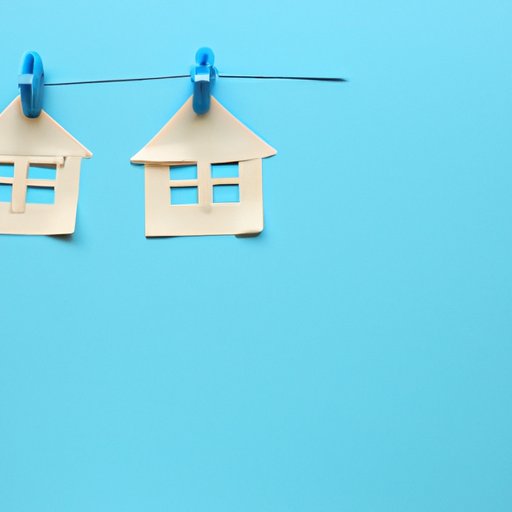
Introduction
Buying a house is a significant investment and a big decision. It’s important to determine an ideal budget before making a purchase to avoid over-extending yourself financially. In this article, we will explore the various costs associated with homeownership, the importance of creating a realistic budget, and how to map out your finances to achieve your homeownership goals.
Breaking Down the Cost of Homeownership: How to Determine Your Ideal Budget
Homeownership comes with a range of costs beyond the purchase price. You’ll also need to consider mortgage payments, property taxes, homeowner’s insurance, and utilities. To determine your ideal budget, start by reviewing your current income and expenses. This will help you calculate how much you can realistically afford to pay each month on your mortgage and other homeownership costs. Make sure to leave room in your budget for unexpected expenses, such as repairs or maintenance.
Setting Realistic Expectations: Understanding the True Cost of Homeownership
It’s easy to underestimate the true cost of homeownership. In addition to the usual costs mentioned above, there may be additional expenses such as maintenance and repair costs, HOA fees, and closing costs. It’s important to be realistic about your budget so you don’t overextend yourself financially. Avoid choosing a home that stretches your finances to their limit. Keep in mind that there are several unseen costs of homeownership that can add up over time.
Mapping Out Your Finances: A Step-by-Step Guide to Creating Your Home Buying Budget
To create a budget, you’ll need to develop a detailed plan that outlines your income and expenses. Track your income and expenses for a few months to get a clear understanding of what you can afford. Look for areas where you can cut back on expenses, such as cutting down on dining out or your daily coffee expenses. Create a long-term budget that you can realistically stick to and update it regularly. Savings for a down payment and other costs should be factored in from the beginning.
The 28/36 Rule: How Much Can You Comfortably Afford to Spend on a Home?
The 28/36 rule is a guideline to help you determine how much you can afford to spend on a home. Your monthly mortgage payment should not exceed 28% of your gross monthly income, and your total debt payments should not exceed 36% of your gross monthly income. This rule is often used by lenders during the mortgage approval process, but it’s important to keep in mind that it’s merely a guideline. Other factors, such as your personal lifestyle and spending habits, should be considered when creating a long-term budget.
Considering All the Costs: Why It’s Important to Factor in Maintenance and Repairs
It’s important to factor in maintenance and repair costs when determining your home buying budget. Common costs include replacing appliances, fixing leaks in the roof or foundation, and repainting the exterior walls. These costs can add up quickly and should be included in your long-term budget plan. Make sure to have additional savings to address these unplanned costs so that doesn’t put a financial strain on you.
Going Beyond the Mortgage: How to Save for a Down Payment and Other Costs of Homeownership
When saving for a down payment and other costs of homeownership, track your expenses and cut back on non-necessary expenses. Consider all the avenues to increase your income such as doing part-time jobs or freelancing. It’s important to start saving early, as this process can take time. Look into options such as first-time homebuyer programs, grants, and assistance from State Programs to minimize your out-of-pocket costs.
Conclusion
Buying a home is a major financial decision that requires careful planning and budgeting. It’s crucial to be realistic when determining your ideal budget and factor in all the costs associated with homeownership, including the unseen costs such as repairing leaks or updating appliances. Create a long-term budget that you can realistically stick to, leaving room for unexpected expenses. With the right financial planning, you can achieve your homeownership goals.




